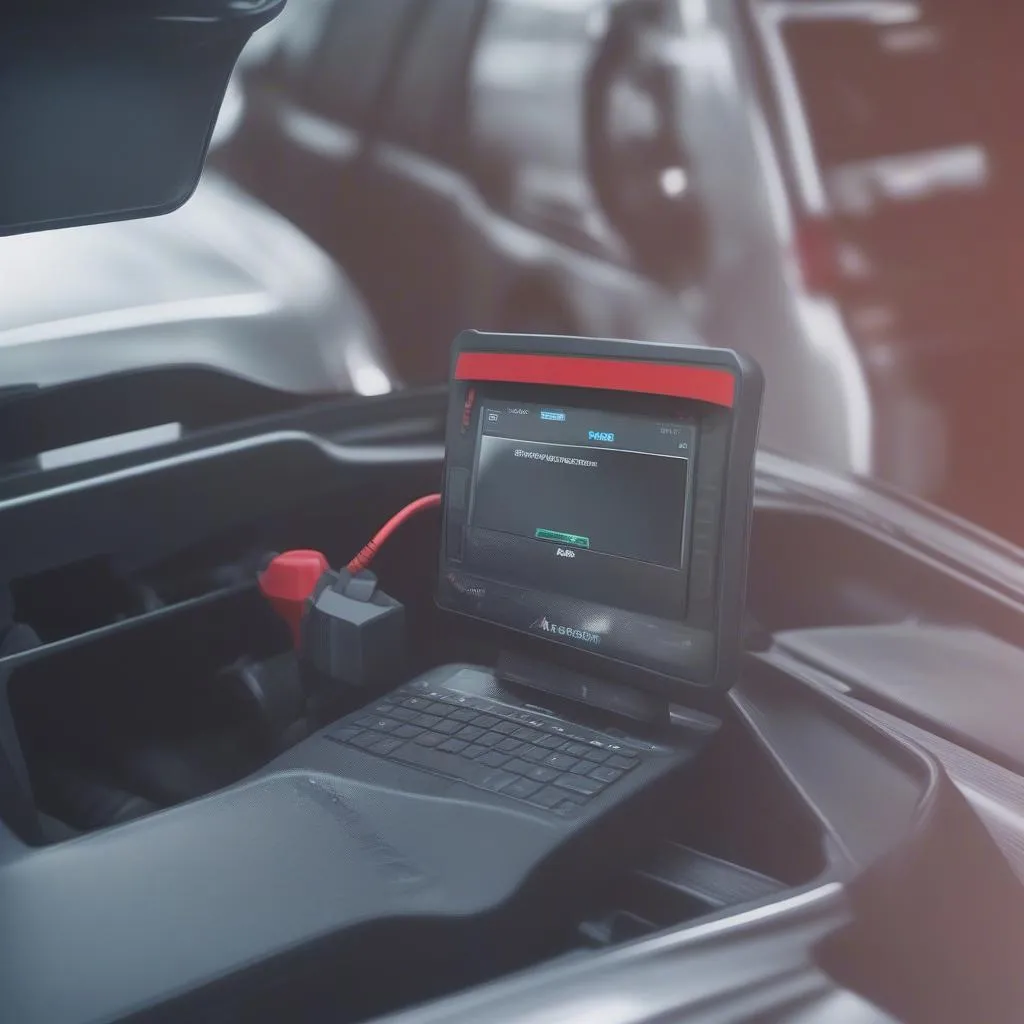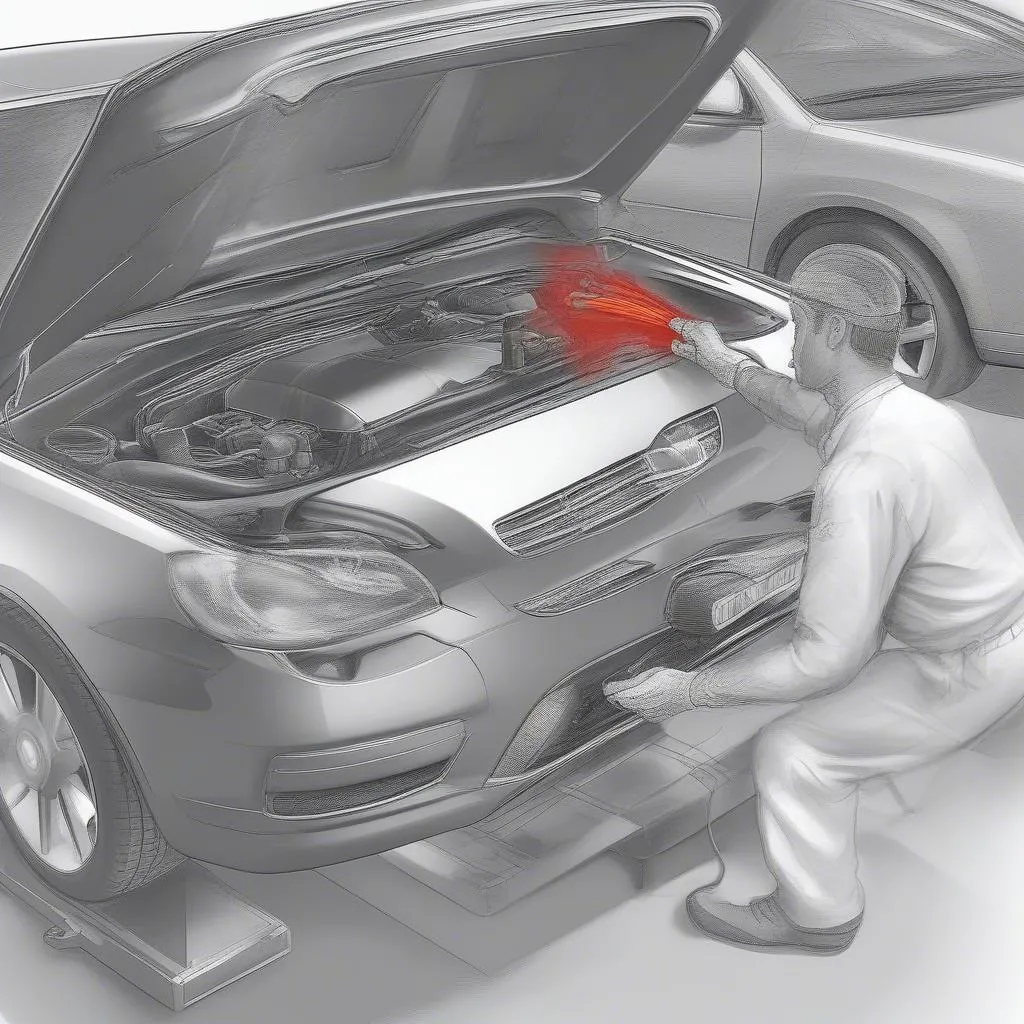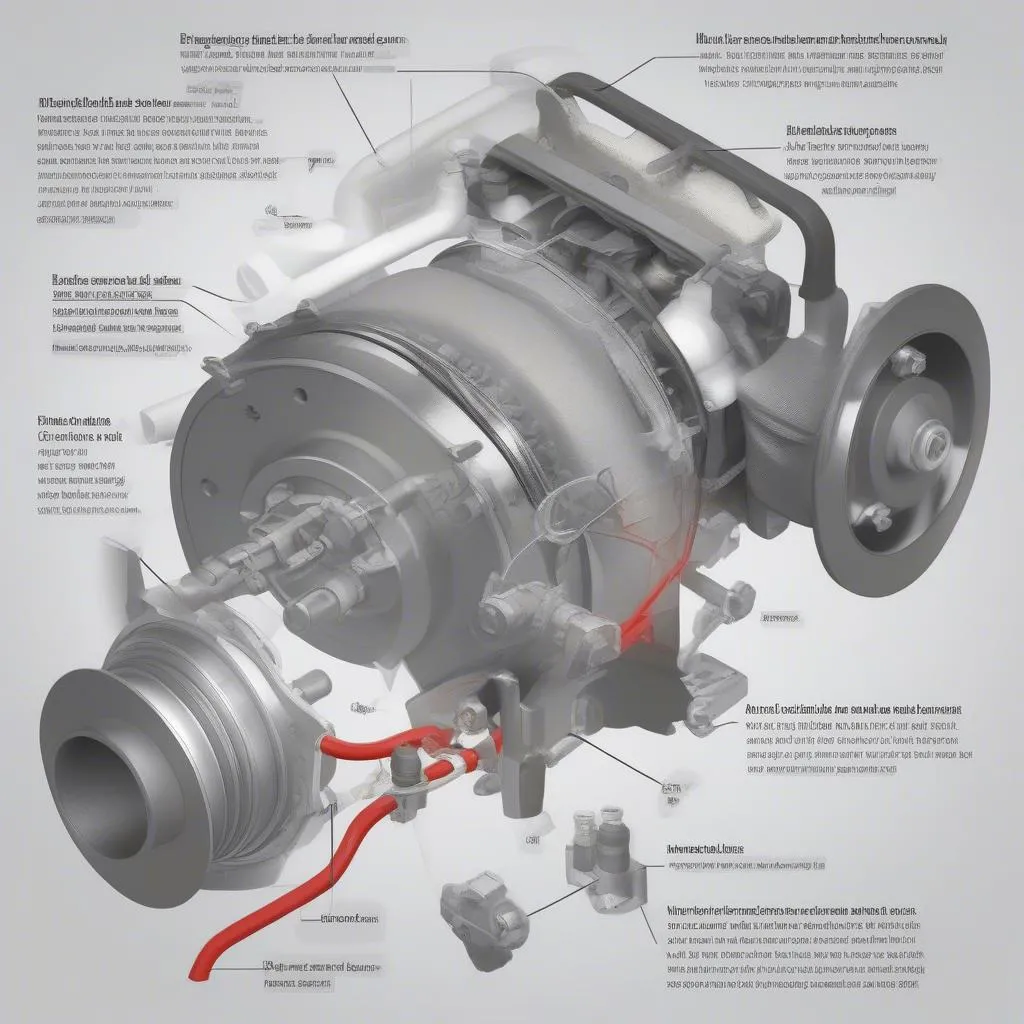Have you ever found yourself in a tricky situation with your car’s braking system, and you’re not sure what’s going on? Maybe you’re getting a “brake warning” light on your dashboard, or you’re experiencing a spongy brake pedal. If so, you might need an ABS bleeding bidirectional scanner.
But what exactly is an ABS bleeding bidirectional scanner and why is it important?
The Meaning of ABS Bleeding Bidirectional Scanner
An ABS bleeding bidirectional scanner is a specialized tool used by automotive technicians to properly bleed the Anti-lock Braking System (ABS) on a vehicle. ABS bleeding is a crucial part of any brake repair or maintenance, especially when dealing with European cars.
Understanding ABS Bleeding and Bidirectional Scanners
Imagine a complex network of tubes filled with fluid – that’s what your brake system is like. When you press the brake pedal, this fluid travels through the system, pushing pistons in the calipers to engage the brake pads against the rotors. An ABS system adds an extra layer of complexity to this by incorporating hydraulic valves and electronic sensors that regulate the pressure within the brake system.
Now, when you’re working on the brake system, air can get trapped within those tubes. This trapped air can cause problems like spongy brakes, inconsistent braking, and even brake failure. That’s where ABS bleeding comes in.
Here’s how ABS bleeding works:
- Pressure release: The technician uses the scanner to release pressure within the brake system, usually by cycling the ABS pump.
- Air expulsion: The scanner helps to open the valves in the ABS system, allowing trapped air to escape through the bleed valves.
- Fluid refill: Fresh brake fluid is then added to the system.
A bidirectional scanner is essential because:
- It can communicate with the ABS system to initiate the bleeding process, allowing for complete and effective air removal.
- It can monitor the pressure and fluid flow within the system, ensuring proper bleeding.
Importance for European Cars
European cars often have more complex and integrated ABS systems compared to American or Asian models. These systems are designed to provide superior braking performance but can be more challenging to bleed properly.
Imagine a scenario: You’re working on a BMW 3 Series, and you need to bleed the ABS system. Without a bidirectional scanner, you’d be left guessing about the correct procedure and might end up damaging the system.
Why is ABS Bleeding Necessary?
Common Situations Requiring ABS Bleeding
- Brake fluid replacement: When you change the brake fluid, it’s crucial to bleed the system to remove any air that might have entered during the process.
- Brake repairs: Any work on the calipers, brake lines, or master cylinder can introduce air into the system, necessitating bleeding.
- ABS system issues: If you experience warning lights related to the ABS system, bleeding might be required to resolve the problem.
How to Bleed the ABS System
Steps for ABS Bleeding
- Prepare the vehicle: Park the car on a level surface and engage the parking brake.
- Locate the bleed valves: Identify the bleed valves on the calipers, usually found near the top or side of the caliper.
- Connect the bidirectional scanner: Ensure that the scanner is compatible with your car’s make and model.
- Follow the scanner instructions: The scanner will guide you through the bleeding process, including cycling the ABS pump and monitoring the system pressure.
- Bleed each caliper: Bleed each caliper individually, starting with the one furthest from the master cylinder.
- Check for air bubbles: Observe the brake fluid as it flows out of the bleed valve for any air bubbles.
- Top off the brake fluid reservoir: Make sure the brake fluid reservoir is full and free of air bubbles.
- Test the brakes: After bleeding, carefully test the brakes to ensure proper operation and that there are no warning lights.
Frequently Asked Questions
Can I bleed the ABS system myself?
While some individuals with mechanical experience might attempt to bleed the ABS system themselves, it’s generally not recommended. ABS bleeding is a complex procedure that requires a bidirectional scanner and a good understanding of the system. Errors during the bleeding process could lead to serious brake problems.
What if my car doesn’t have ABS?
Cars without an ABS system can be bled using a standard brake bleeding procedure. However, it’s important to consult your car’s owner’s manual for specific instructions.
How often should I bleed the ABS system?
The frequency of ABS bleeding depends on several factors, including the age of the brake fluid, the mileage of the vehicle, and the driving conditions. It’s generally recommended to bleed the ABS system every two years or every 30,000 miles.
Additional Resources
If you’re interested in learning more about ABS bleeding and bidirectional scanners, consider these resources:
- [Book name] by [Author name]. This comprehensive guide provides detailed information on brake systems and their maintenance.
- [Website name] is a great resource for finding DIY tutorials and information on car repairs.
- [YouTube channel name] offers video tutorials on various car maintenance topics, including ABS bleeding.
 ABS Bleeding Tool
ABS Bleeding Tool
 Bleeding Brake System
Bleeding Brake System
 Brake System Diagram
Brake System Diagram
Contact Us
For any assistance with car diagnostics or repair services, you can contact us via WhatsApp: +84767531508. Our team of experienced automotive technicians is available 24/7 to help you.
Don’t hesitate to leave a comment below with any questions or share your experiences with ABS bleeding!